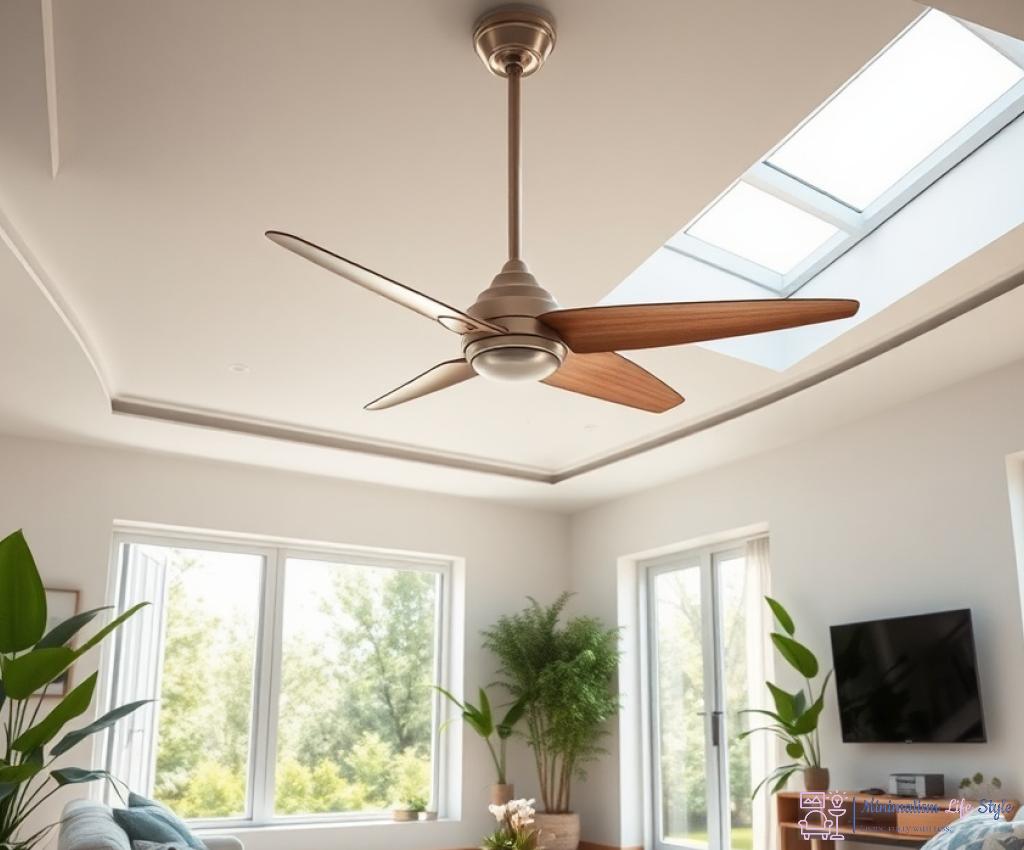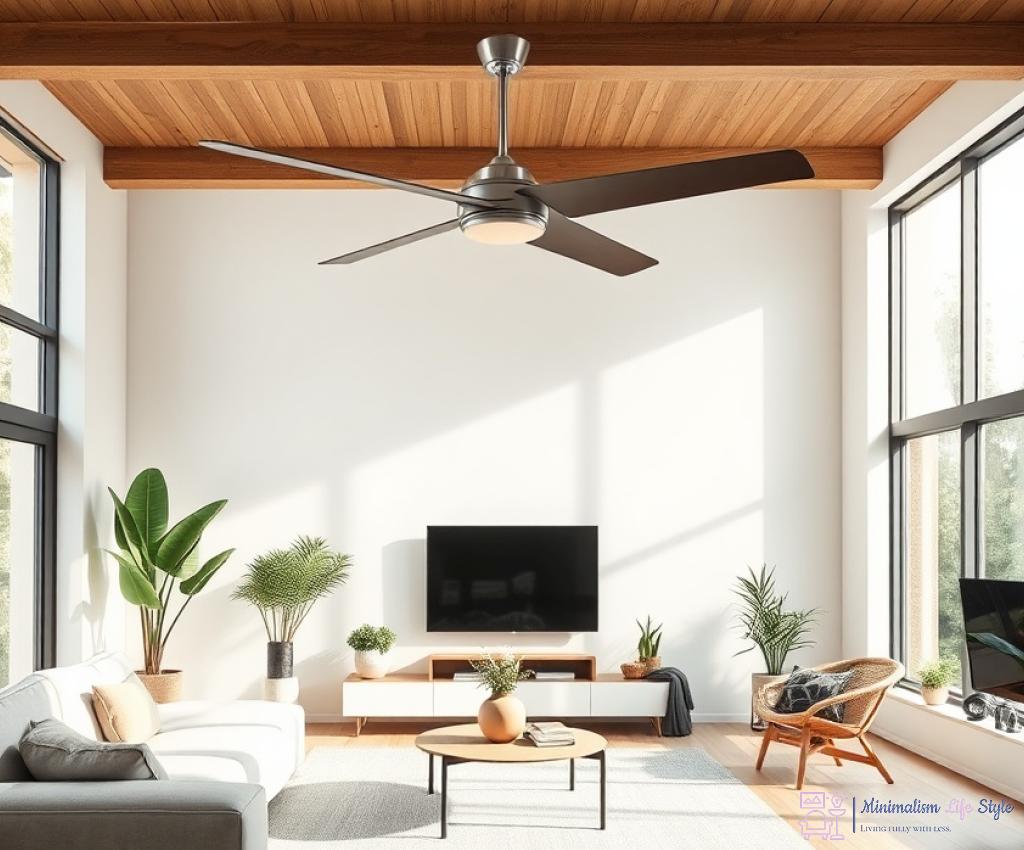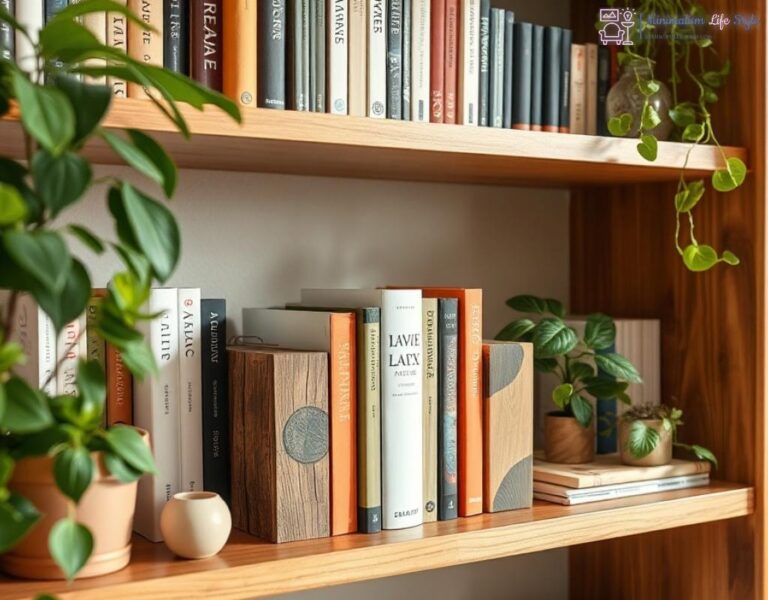Embrace Eco-Friendly Design: The Aesthetic Appeal of Minimalist Ceiling Fans

In a world increasingly leaning towards sustainability, the design of our living spaces plays a crucial role in fostering an eco-conscious lifestyle. Minimalist ceiling fans are not just functional; they embody a design philosophy that champions simplicity and elegance while promoting energy efficiency. These fans are a staple in the modern home, proving that you don’t have to sacrifice style for sustainability.
Minimalist ceiling fans are designed with clean lines and understated elegance, making them a perfect fit for any decor. Their aesthetic appeal goes beyond mere looks; they offer significant benefits that align with green minimalism. By opting for these fans, you ensure that your cooling solution is not only energy-efficient but also complements the serene atmosphere of your living space.
Key Benefits of Minimalist Ceiling Fans:
- Energy-efficient operation that reduces electricity bills.
- Quiet performance, creating a peaceful environment.
- Stylish designs that enhance interior decor.
- Low maintenance due to fewer intricate parts.
The beauty of minimalist ceiling fans lies in their ability to blend seamlessly with various interior styles, from industrial chic to contemporary elegance. They often feature natural materials and muted color palettes, which not only resonate with the principles of eco-friendly design but also create a calming ambiance. As we make more conscious choices about our environment, selecting ceiling fans that reflect these values becomes essential.
| Feature | Traditional Fans | Minimalist Fans |
|---|---|---|
| Energy Efficiency | Low | High |
| Design Complexity | Intricate | Sleek |
| Noise Level | Moderate | Quiet |
| Maintenance | High | Low |
Transitioning to a minimalist ceiling fan is a step towards embracing a lifestyle that values both aesthetics and environmental responsibility. By choosing designs that reflect simplicity and functionality, you’re contributing to a larger movement of green minimalism in home decor.
Harnessing Wind: How Ceiling Fans Enhance Energy Efficiency

In our pursuit of sustainable living, harnessing natural elements like wind can lead to remarkable energy savings. Ceiling fans serve as a prime example of how a simple yet effective design can transform our spaces while minimizing our ecological footprint. By embracing the flow of air, these fans not only cool our surroundings but also reduce reliance on energy-intensive air conditioning systems.
Understanding the Mechanics of Airflow is crucial to maximizing the benefits of ceiling fans. Unlike air conditioners that rely on refrigerants and heavy machinery, ceiling fans circulate air through gentle movement. This process creates a wind-chill effect, making a room feel cooler without necessarily dropping the temperature. For instance, when the blades rotate in a counterclockwise direction during warmer months, they push cool air downwards, allowing occupants to feel refreshed even at higher thermostat settings. This simple adjustment can lead to significant energy savings throughout the summer.
The Dual Functionality of Ceiling Fans also contributes to their energy-efficient reputation. Many modern ceiling fans come equipped with reversible motors, allowing them to operate in both directions. In winter, homeowners can switch the fan to a clockwise direction, which helps circulate warm air that rises to the ceiling back down to living spaces. This dual functionality means that ceiling fans can provide year-round energy efficiency, lessening the need for heating and cooling systems and thereby reducing energy bills.
Moreover, the integration of smart technology has further enhanced the energy efficiency of ceiling fans. Many contemporary models come equipped with smart features that allow homeowners to control their fans via mobile apps or voice commands. This capability ensures optimized usage, as users can set schedules or adjust speeds based on real-time needs, ultimately leading to less wasted energy. By incorporating such innovative solutions, modern ceiling fans not only enhance comfort but also align with the principles of green minimalism.
Smart Technology: The Future of Energy-Saving Ceiling Fans

As we continue to embrace a lifestyle centered around sustainability and energy efficiency, the integration of smart technology into ceiling fans represents a significant leap forward. These innovative fans not only enhance comfort but also align seamlessly with the principles of green minimalism, allowing homeowners to maintain a stylish environment while being conscious of their energy consumption.
Smart ceiling fans come equipped with a range of advanced features designed to optimize energy use. From remote control capabilities to automatic adjustments based on room conditions, these fans take convenience to a whole new level. By leveraging technology, homeowners can effortlessly manage their cooling needs and ensure they only use energy when necessary.
The ability to connect smart ceiling fans to home automation systems enhances their energy-saving potential. For instance, when paired with smart thermostats or sensors, these fans can adjust their speed and operation based on the occupancy of a room or the temperature outside. This interconnectedness not only minimizes energy waste but also creates an environment that adapts to the user’s preferences.
Here are some notable features of smart ceiling fans that contribute to their energy efficiency:
- App Control: Manage fan settings from your smartphone, allowing for remote adjustments even when you’re not at home.
- Voice Activation: Integrate with voice assistants to control fan speed and settings hands-free.
- Scheduling: Set specific times for the fan to operate, ensuring it runs only when needed.
- Energy Monitoring: Track energy usage through connected applications, offering insights into consumption patterns and savings.
The future of ceiling fans lies in their ability to blend functionality with eco-conscious design. Smart technology not only enhances the user experience but also plays a pivotal role in reducing our overall energy consumption. By choosing energy-efficient ceiling fans with smart capabilities, we are taking a meaningful step towards a greener, more sustainable living environment.
Airflow and Comfort: The Science Behind Ceiling Fan Placement
Understanding the dynamics of airflow is essential for maximizing the benefits of ceiling fans in our homes. Proper placement not only enhances comfort but also significantly contributes to energy efficiency, aligning perfectly with the principles of green minimalism. The right fan positioning can transform how we experience our living spaces, allowing us to reduce reliance on energy-intensive cooling systems while enjoying a refreshing breeze.
First and foremost, the height at which a ceiling fan is installed plays a pivotal role in its performance. Ideally, the blades should be positioned at least eight to nine feet above the floor to ensure optimal circulation of air. When the fan is too low, it can create a disruptive airflow pattern, making it less effective in cooling the room. Conversely, placing the fan too high may diminish its ability to circulate air efficiently. Striking a balance in height ensures that you can fully benefit from the fan’s cooling capabilities while maintaining a harmonious aesthetic in your home.
Additionally, the direction in which the fan rotates is crucial for achieving comfort in both summer and winter months. During warmer seasons, setting the fan to rotate counterclockwise pushes cooler air downwards, creating a delightful wind-chill effect that helps occupants feel cooler without lowering the thermostat. In contrast, switching the fan to a clockwise direction in winter helps recirculate warm air that often rises to the ceiling, fostering an evenly heated environment. This dual functionality of ceiling fans not only enhances comfort but also promotes energy efficiency, allowing homeowners to adjust their heating and cooling settings based on their needs.
The placement of ceiling fans in relation to furniture and architecture also impacts airflow. Avoid positioning the fan directly above large furniture pieces, as they can obstruct airflow and hinder the fan’s ability to circulate air effectively. Instead, aim to create an open space around the fan, allowing it to create a cohesive current throughout the room. This thoughtful arrangement not only enhances air circulation but also creates an inviting atmosphere that complements the principles of green minimalism.
In summary, the science behind ceiling fan placement is a vital consideration for those looking to enhance comfort while championing energy efficiency. By understanding the importance of height, rotation direction, and strategic positioning relative to furniture, homeowners can create a more comfortable and eco-friendly living environment. As we continue to embrace sustainable design choices, optimizing ceiling fan placement is a simple yet impactful step toward achieving a greener, more energy-efficient home.
Sustainable Choices: Materials and Manufacturing of Eco-Conscious Fans
As we advance in our quest for sustainability, the materials and manufacturing processes of home appliances play a pivotal role in reducing our ecological footprint. Eco-conscious ceiling fans are at the forefront of this movement, showcasing how design and sustainability can coalesce beautifully. By choosing fans made from sustainable materials and manufactured with environmentally friendly practices, homeowners can contribute to a more sustainable future while enjoying efficient cooling solutions.
When selecting a ceiling fan, the materials used in its construction can significantly impact both its environmental performance and aesthetic appeal. Eco-conscious fans often utilize sustainable materials such as:
- Bamboo: A fast-growing, renewable resource that provides durability and a unique look.
- Recycled Metals: Many fans incorporate recycled aluminum or steel, reducing waste and conserving natural resources.
- Natural Wood: Sourced from responsibly managed forests, natural wood blades offer timeless beauty while supporting sustainable forestry practices.
- Low-VOC Finishes: Eco-friendly paints and finishes ensure indoor air quality is maintained, minimizing harmful emissions.
By opting for ceiling fans crafted from these materials, consumers not only enhance their home’s aesthetic but also actively participate in sustainable practices that benefit the planet.
The journey of a ceiling fan from concept to consumer involves various stages of production, and each stage presents an opportunity to prioritize environmental responsibility. Manufacturers committed to eco-conscious practices often implement:
- Energy-Efficient Production: Utilizing renewable energy sources during manufacturing processes to minimize carbon footprints.
- Waste Reduction Techniques: Adopting methods that reduce waste generation, such as recycling scraps and reusing materials.
- Ethical Labor Practices: Ensuring fair treatment and working conditions for all employees involved in the manufacturing process.
These sustainable manufacturing techniques not only ensure that the final product is eco-friendly but also foster a responsible and ethical approach to production.
In conclusion, making informed choices about the materials and manufacturing processes of ceiling fans can lead to a more sustainable lifestyle. By investing in eco-conscious fans, individuals contribute to a greener planet while enjoying the benefits of energy-efficient cooling. Embracing green minimalism in home decor is not just a trend but a necessary step towards ensuring a healthier environment for future generations.




